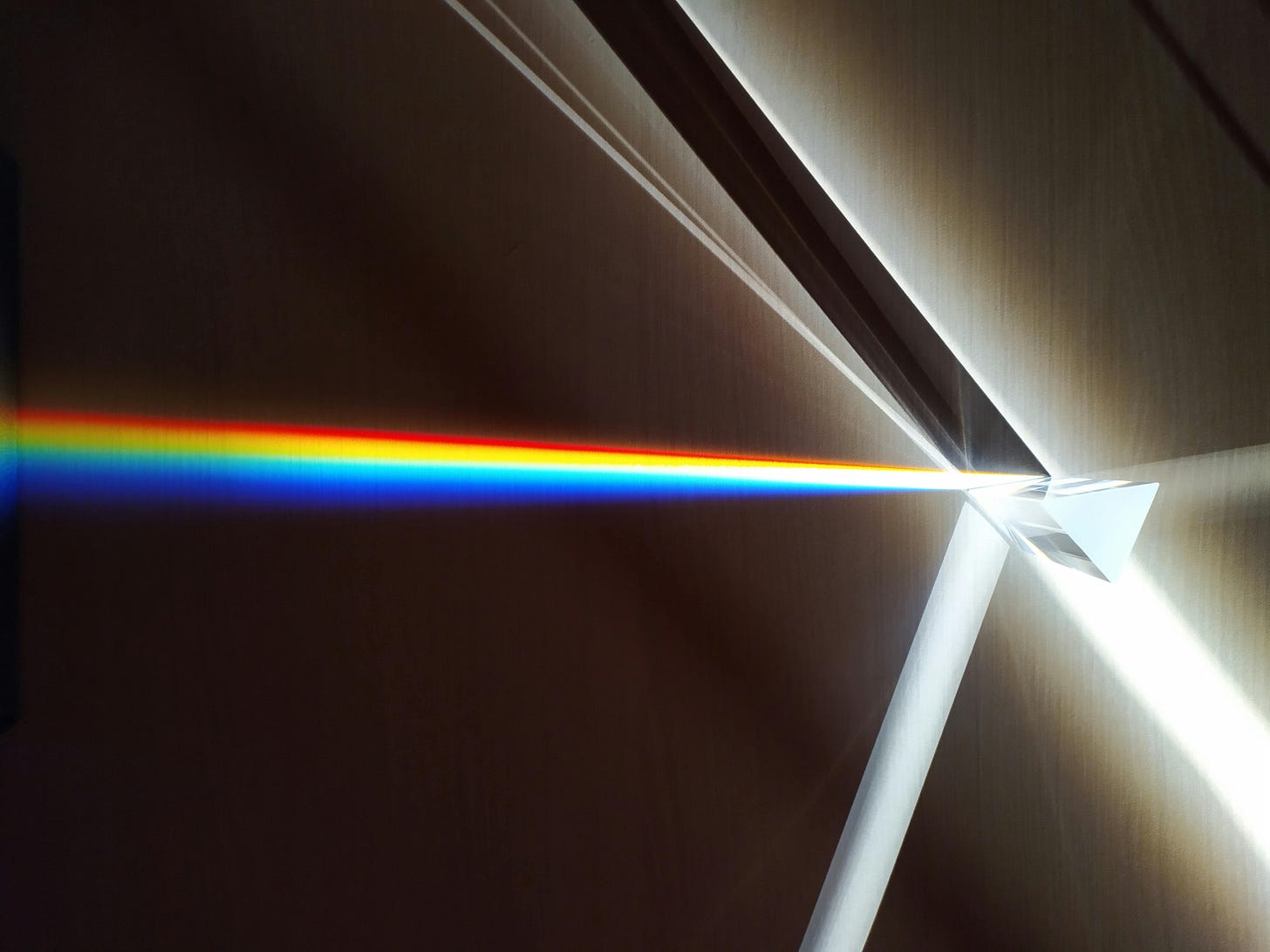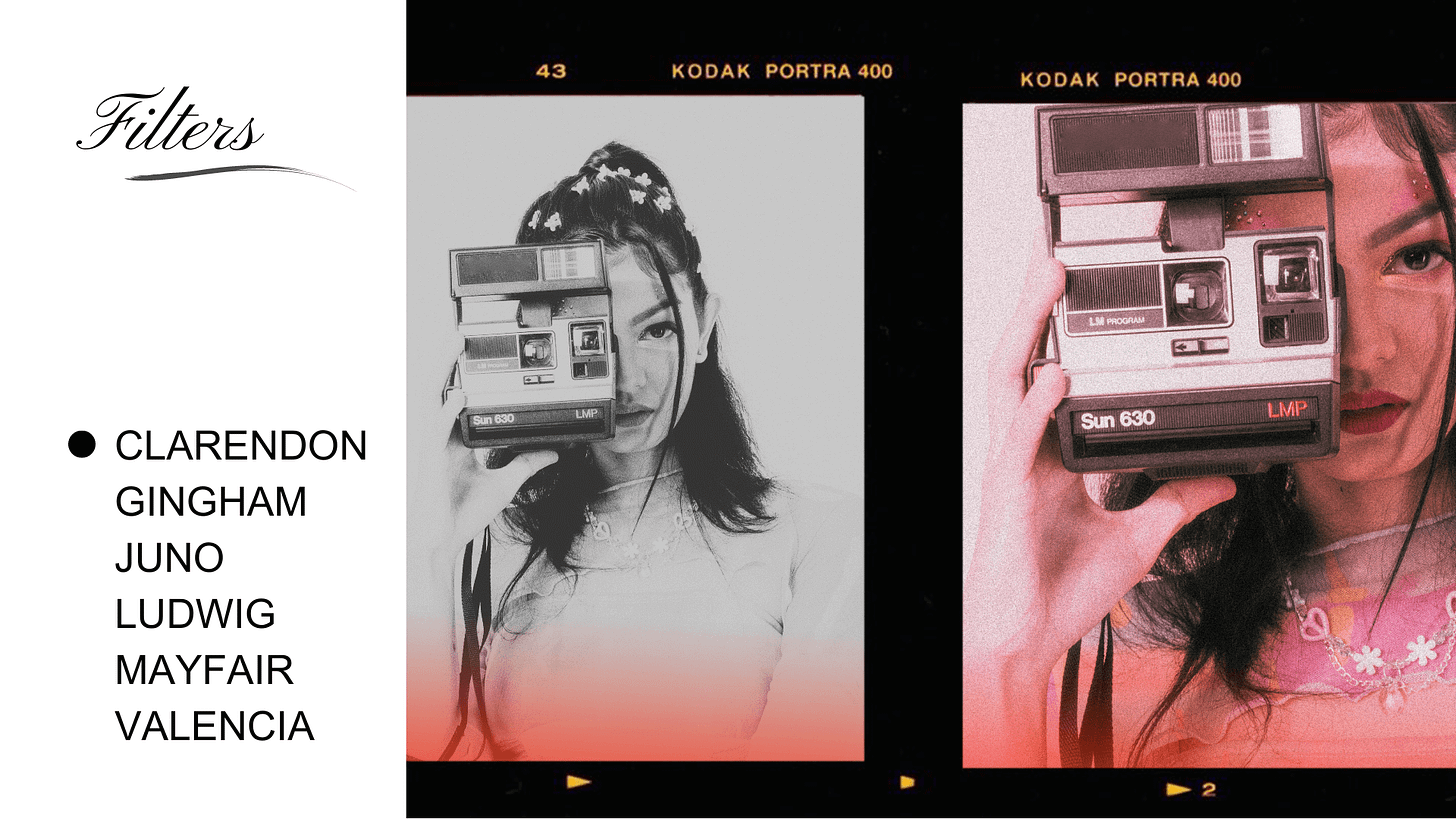Refracting The World Through Retro Photo Filters
The recent rise of retro film filters is perhaps yet another symptom of our nostalgia fever.
Hi everyone!
Welcome to the first essay of the refreshed Zero Percent Sugar. I’m so excited to share what’s been nibbling at the corners of my mind.
If you’ve been online recently, you probably would have noticed one particular camera brand making its rounds on TikTok, YouTube, and Instagram. If you haven’t noticed, well, it’s Fujifilm.
Fujifilm is a Japanese camera manufacturer. I bought my first Fujifilm digital camera in 2018 — six years ahead of the current hype, mind you. My Fujifilm X-A3 was cheaper compared to similar models from competitor brands like Canon and Nikon. More importantly, it was lighter and more compact. These characteristics were attractive to an art school student on a budget who wanted to get a bang for her buck.
It was only last month (on TikTok) that I learned that Fujifilm’s biggest differentiator from other camera makers is its film simulation. You can fiddle with a Fujifilm camera’s settings to make digital photographs look like film.
But, why would we want our digital photos to look like film? Glossier’s sleek product photography ushered in an obsession with clean and minimal aesthetics. The sheer amount of Japandi interior photos on Pinterest only reinforced this obsession with an airy, yet sterile atmosphere. And, now, we want our photos today to look like the ones we took when Instagram came out over a decade ago.
The Nostalgia Trip
The recent rise of retro film filters is perhaps yet another symptom of our nostalgia fever. In her Eye On Design article, The Filtered Photo Revival Is a Sign of the Times, writer Angelica Frey comments on how this filtered photo trend harkens back to Tumblr, Hipstamatic, and early Instagram. She recounts: “A friend told me that, after years of berating by his teenage daughter for his inability to let go of Polaroid-like iPhone photography, he recently got her blessing to resume using the style.”
Frey explores how the resurgence of photography trends mirrors the twenty-year-fashion cycle, although at an accelerated pace. TikTok and other video-first microblogging platforms like YouTube Shorts and Instagram Reels heightened the urgency to find the next viral thing, causing us to scour the archives of the Internet.
Famed neurologist Ivan Pavlov (of the Pavlovian Dogs fame) allegedly said, “If you want a new idea, read an old book.” The indie sleaze aesthetic of times bygone might just be the old book worth a second reading.
Another reason why the retro-filtered trend took off is because of its association with simpler times. I wrote a lot about nostalgia, kitsch, and fuzzy feelings in a previous article on Zero Percent Sugar. Kitschy things, like Lisa Frank stickers, “LIVE LAUGH LOVE” pillowcases, and Instagram filters elicit saccharine emotions that make our days slightly better.
The filtered photo trend originated from before the pandemic and before annual US college tuition skyrocketed to six figures. Using these filters transports us back to those easier days and away from our current woes.
Filtering Reality
When Instagram first came out in 2010, I signed up for an account on my iPod touch. I did not tell my parents because I didn’t want them to follow me (they eventually did). Instagram was where I could share my budding artistic sensibilities with friends. I spent hours debating with myself on which filter to use, and which font to use for a caption on PicMonkey. My photo editing savvy grew along with the number of film filter apps in the AppStore: VSCO, Pixlr-o-Matic, and Snapseed.
My grade school classmates and I snapped selfies for the ‘gram. We shared the photos in a group chat on Facebook where each of us would edit the same photo in different ways. One person made their photo sickeningly yellow, while another used a chlorine-colored filter. I was the designated edgy kid, hence my photographs were either black-and-white or looked old. We uploaded the same photo, retouched in different ways, on our Instagram feeds.

These filters allowed us tween girls to refract our shared experiences through the lens of our individualities. In her collection of essays, On Photography, journalist and critic Susan Sontag meditates on the nature and history of photography, from its role in warzones to its qualities as an art form. She argues, “To photograph is to appropriate the thing being photographed.” The subject of the photograph loses its agency and changes into a belonging of the photographer.
Sontag goes even further: “Cameras miniaturize experience, transform history into spectacle.” The moment a photographer pushes the shutter button, the person, thing, or place they photograph turns into something to be looked at, more than something exists.
For example, when I take photos of my meals and share them online, the food loses some of its association with its origins. A meal from a restaurant becomes Maddy’s meal at so-and-so restaurant to my Instagram followers. Through my smartphone camera, I filter (pun-intended) reality through my perspective and, consequently, alter it. Cropping and camera angles help us frame the situation in a photograph. Photo filters make this subjectivity more apparent.
Showing Our Handiwork
Filters also replicate the look of film while removing the time-consuming process of development: no more dark rooms, no more sifting through weird liquid.
Yet, film development reveals the hand of the developer. A light touch could leave a scratch on the surface. Shaking a Polaroid might leave the image blurry and underdeveloped. You can’t hide a clumsy hand in the developing room.

Filters let us show evidence of our hand without the drawbacks of messing up a photo. Fujifilm offers film simulation recipes where you could make your photographs look like those from existing film packs, or customize your own. Fujifilm’s film simulation feature This bespoke approach to digital photography speaks to our penchant for individualism.
Instant Authorship
Now, everyone wants to be an Individual. Whether it’s turning our personalities into personal brands to get more professional opportunities, or calling out NPC behavior, we aspire to stand out in all aspects of our lives.
Filtered photos, like LinkedIn humble brag posts and Bitmojis, are tools in our arsenal for the battle of differentiation. What started as an innocent and playful attempt at self-expression back in grade school morphed into self-glorification.
The way I describe the current state of social media sounds grim. I don’t think it is. I love being a weirdo. The accessibility of tools like cameras, editing apps, and micro-blogging platforms through smartphones made it easier for us to cement ourselves as individuals.
Instead of waiting for a photographer to take our photo or for a writer to feature us in a magazine, we can author our own stories — instantly. We don’t even need to go to art class to learn how to paint or draw. Smartphone cameras and retro filter apps let us make pictures unique to us.
Authorship is no small feat. A single photograph, tweet, or video has the power to change the trajectory of your life. Just look at Bella Poarch, Mr. Beast, and Cardi B. But, like what Uncle Ben says: “With great power comes great responsibility.”
So, what now? 💁🏽♀️
How could we approach authorship and subjectivity today? Sontag clues us in: “Photographs cannot create a moral position, but they can reinforce one and build a nascent one.” Like what I touched on earlier, photographs are tools that amplify our point of view online. The first step to using them — along with other similar tools — is to be aware of what makes you tick.

Before sending out that email, go over your writing and ask yourself how and where your point of view stands out. Take a step back after watching an influencer’s hot take on the latest fad and ask yourself why it resonated with or triggered you. Read over that performance review draft for your colleague before hitting send.
The reverse is also true. Read the citations at the bottom of research papers and look ‘em up. Poke holes at reviews for art and restaurants and see how their experiences and tastes color their reaction.
This way of thinking helped me filter out the noise and decide for myself what I wanted out of this lifetime. Was I celebrating what makes me me? Or, was I molding myself to suit another person’s definition of success? After all, we see life through a lens, although not through one as apparent as a filter on Instagram back in 2010.
🦋 This Fortnight’s Inspo 🦋
Books: I’m currently reading Little Women by Louisa May Alcott for the first time. It’s strange reading a children’s novel in my twenties, but I don’t think I could have appreciated Alcott’s deft prose and social critique when I was twelve.
Film/Video: Speaking of Fujifilm, I’ve been bingeing Faizal Westcott’s Fujifilm tutorials. My recent coverage of art shows in Manila forced me to pick up my trusty X-A3 again. I’m having so much fun exploring this side of my creative practice.
Art: I’ve been spending a lot of time in my own company. Solitude is trying despite its many rewards. I’m a long way from enlightenment, but this Chinese landscape painting by Zhao Yuan reminds me to stay the course. I made it my desktop wallpaper!






I loved this post Madeleine! I stumbled upon it while looking up articles about nostalgia marketing and why we're so tempted to reach out for things in our past, and this post resonated with me so much.